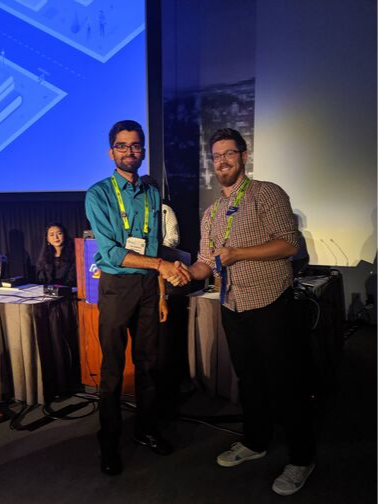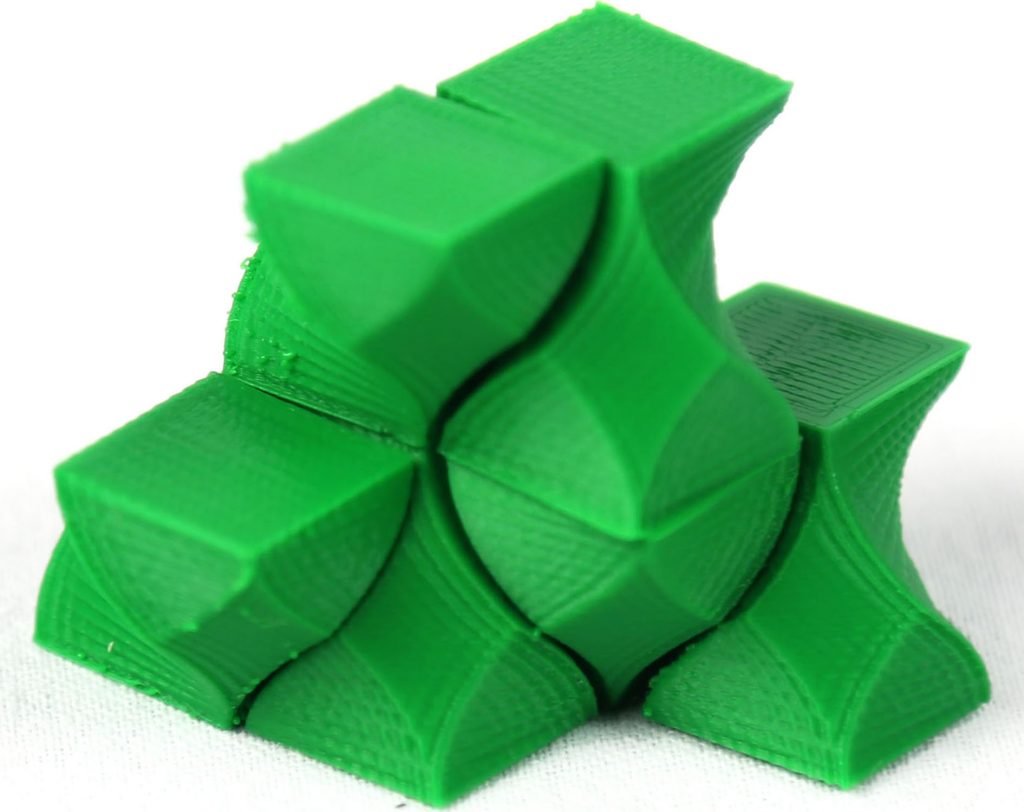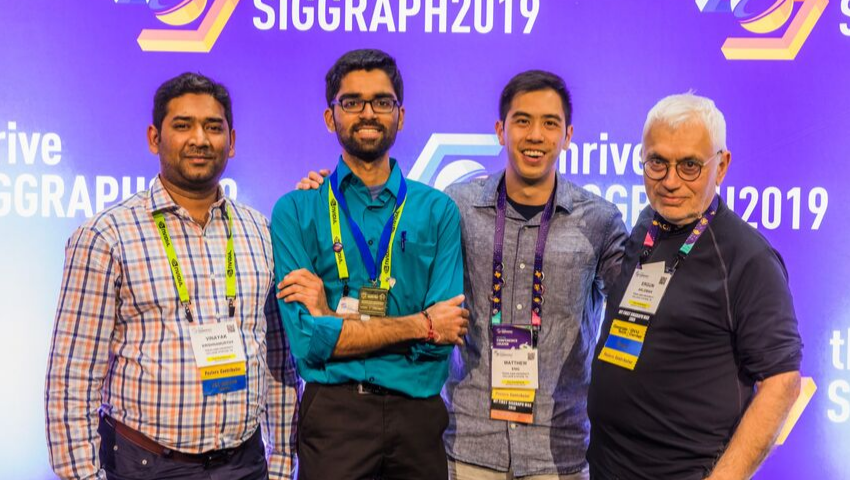© 2019 Glen Vigus, Lecturer, Senior Visualization Production Specialist, Department of Visualization
Each year at the SIGGRAPH conference, the ACM Student Research Competition (SRC) — sponsored by Microsoft — offers a unique opportunity for undergraduate and graduate students to present their original research before a panel of judges and attendees. This year, Sai Ganesh Subramanian (Texas A&M University) took home the first-place prize in the graduate category for the poster “Delaunay Lofts: A New Class of Space-Filling Shapes.” We had the chance to talk with Sai and his team, which includes Matthew R. Eng, Vinayak Krishnamurthy, and Ergun Akleman. Read on to hear how Sai developed “Delaunay Lofts” and what advice he would share with other students thinking of submitting to the competition.
SIGGRAPH: What was your reaction to winning the ACM Student Research Competition at SIGGRAPH 2019?
Sai Ganesh Subramanian (SGS): Indeed, we were gratified with the results. It was a great pleasure for our team to see the excitement in others when we shared our idea. The ACM Student Research Competition was an excellent avenue for us to present our research — we received valuable feedback from those who think similarly and it has increased our enthusiasm multi-fold.
SIGGRAPH: Tell us about your winning research. What inspired your ‘Delaunay Lofts’ method? How do you anticipate the research to be used? What problems does it solve?
SGS: We got the basic idea by a simple change in perspective. Delaunay Lofts are inspired by a geometric shape called Scutoid, which enables animal skin cells to be watertight by slotting together to form a unified shape. This idea of how the shape emerges is based on a notion of Voronoi tessellation, which is the partitioning of a plane into regions based on points. We looked at this idea behind Scutoids and abstracted an elegant approach so that we can now use it to design a totally new class of shapes we didn’t even know existed. The geometric and topological principles of these shapes allow for the design of a potentially limitless variety of designs.
SIGGRAPH: Share with us how you developed your poster. What steps were involved in the research process? What challenges did you face/overcome?
SGS: While developing the poster, our intention was to make sure we conveyed the idea in a systematic way so that the reader easily understands the core of the idea. The challenge in articulating simple ideas lies in exposing their rich intellectual opportunities while maintaining the elegance of the idea. Our case was similar, since our algorithm itself was simple. So, we approached our poster as a means to not only visualize our method with clarity but also to demonstrate its power through examples by physically prototyping Delaunay Lofts using additive manufacturing.
The research process in our project was definitely unconventional. We wanted to apply what we had learned from Scutoids and apply the same principles to be able to design shapes beyond what is known to occur with interesting geometric, topological, and mechanical characteristics. This was primarily the backbone of our research quest — the curiosity to understand geometric patterns in nature. The challenge for us was to control our enthusiasm and direct it to develop a procedural and systematic methodology that ultimately led to our paper in the Computers & Graphics journal and later the SIGGRAPH Poster.
SIGGRAPH: Now that you’ve presented this research at SIGGRAPH 2019, what’s next for your project?
SGS: SIGGRAPH was a high-visibility event that helped us get valuable advice on how to move forward. We have identified potential applications in a range of areas including architectural design, additive manufacturing, metamaterial design, heat transfer, air-flow control, and even educational toys. We are currently exploring new ways of designing meta-materials (materials engineered to have properties not found in naturally occurring materials) and characterizing their mechanical properties for withstanding stress, torsion, and fatigue.

Sai Ganesh Subramanian accepting his first place award.
SIGGRAPH: Have you attended a SIGGRAPH conference before 2019? If yes, share your favorite memory. If not, tell us about your first SIGGRAPH experience.
SGS: For most of the team, except Dr. Akleman, this was our first SIGGRAPH experience. It definitely was an eye-opening and overwhelming experience. We got exposed to arguably the best collection of research work, arts, and emerging technologies. Unanimously, our personal favorite session was the Technical Papers Fast Forward session. The idea of making an impression by explaining research within 30 seconds was incredible. It is difficult to recall an instance when we were bored during SIGGRAPH 2019. In fact, the challenge was to choose between multiple, equally enticing events happening simultaneously. More than anything, the thrill was being able to share ideas and meet new people working in different domains.
SIGGRAPH: How will receiving this SIGGRAPH award help you in your career post-graduation?
SGS: Of course winning an award at SIGGRAPH, one of the premier technology conferences in the world, will be highly valuable to my career post-graduation. It was also a great boost to our team. We have already started working on our SIGGRAPH 2020 submission.

Representative image for “Delaunay Lofts: A New Class of Space-Filling Shapes” © 2019 Texas A&M University
SIGGRAPH: What advice would you give to other graduate students thinking of submitting to a SIGGRAPH conference/competition?
SGS: I’d say it is really important to find something that really keeps you going and guides you through your research. There are always certain things that we overlook, and often those are the directions that lead to unexplored ideas, which I believe carries the most importance in research. Also, as a researcher, we often find it difficult to let go of the older ideas we generated. This is why my advisers usually emphasize to not be emotionally attached to the work we are doing. The idea belongs to nobody and everybody at the same time, meaning that one should push existing ideas out in the open for others to work on, thereby making space for new ideas to emerge in one’s mind. Other cliché advice would be to work harder, start early, read a lot of papers, etc., but I’m not sure whether I’m following that either.
Do you want to submit your latest project to SIGGRAPH 2020? Mark your calendar with these submission dates, and stay tuned for more information.



